#animal feed pellet machines
Explore tagged Tumblr posts
Text
What are The Main Machines in the Animal Feed Making Plant
Crusher part of animal feed pellet machines: Crushing is one of the important processes in animal feed pellet processing. It is the main factor affecting the quality, yield, and cost of compound feed. The significance of crushing is to improve feed digestibility, enhance the feeding effect, and improve feed quality. Make a Quick Inquiry Now ! Now widely used is the drop-shaped pulverizer.…

View On WordPress
0 notes
Text
youtube
Feed pellet making machine,chattle animal feeding machine,animal feed pellet making machine.
#Youtube#youtube shorts#youtube video#laxmi enterprises is the leading manufacturer#laxmienterprises#Feed pellet making machine#chattle animal feeding machine#animal feed pellet making machine.
0 notes
Text
Agriculture Equipments Manufacturers in India | Farm Equipments | Garden Equipments - Vinglob Greentech
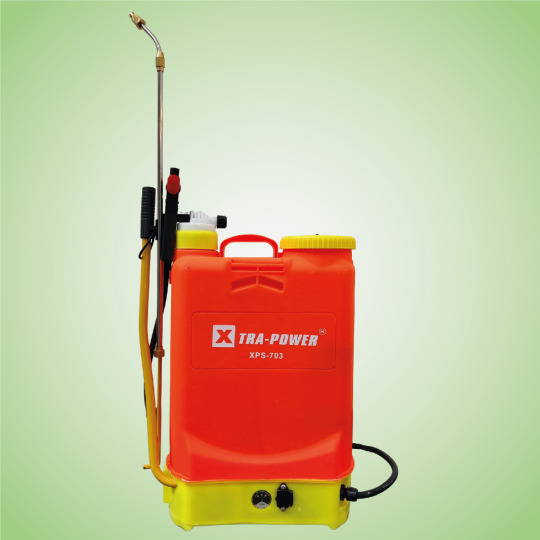
Agriculture Equipments Manufacturers in India | Farm Equipments | Garden Equipments - Vinglob Greentech
Elevate Your Farming and Gardening Efforts with Vinglob Greentech: Leading Agriculture Equipments Manufacturers in India
Agriculture is the backbone of India, and the role of modern equipment in enhancing productivity and sustainability cannot be overstated. Vinglob Greentech stands at the forefront as one of the premier Agriculture EquipmentsManufacturers in India, dedicated to revolutionizing farming and gardening practices across the nation.
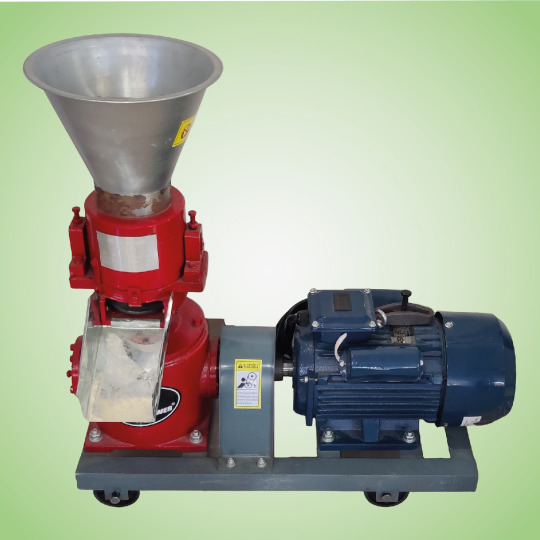
The Significance of Agriculture Equipment in India
India's agriculture sector is diverse and complex, encompassing a wide range of crops and practices. Whether you are a smallholder farmer or part of a large agribusiness, the right agriculture equipment can make a world of difference. Here's why agriculture equipment is crucial in India:
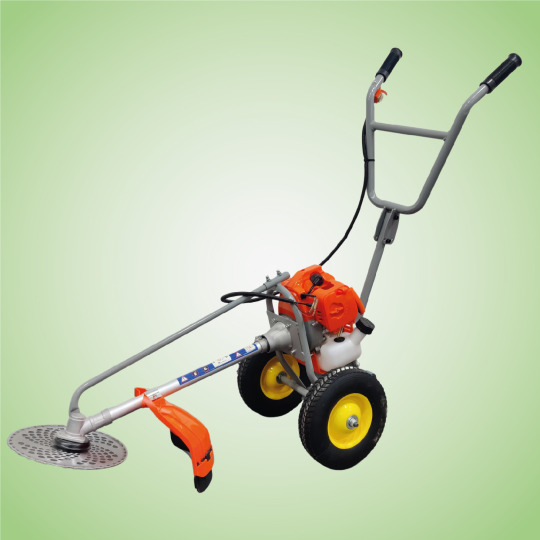
Enhanced Productivity: Modern agriculture equipment significantly boosts productivity, allowing farmers to produce more with less manual labor.
Time Efficiency: Farming equipment saves time, enabling farmers to focus on multiple tasks and achieve higher crop yields.
Cost Efficiency: By reducing labor costs and increasing output, agriculture equipment contributes to cost-efficiency, benefiting both farmers and consumers.
Sustainability: Many modern farming equipment and techniques are designed to be environmentally friendly, reducing the environmental impact of agriculture.
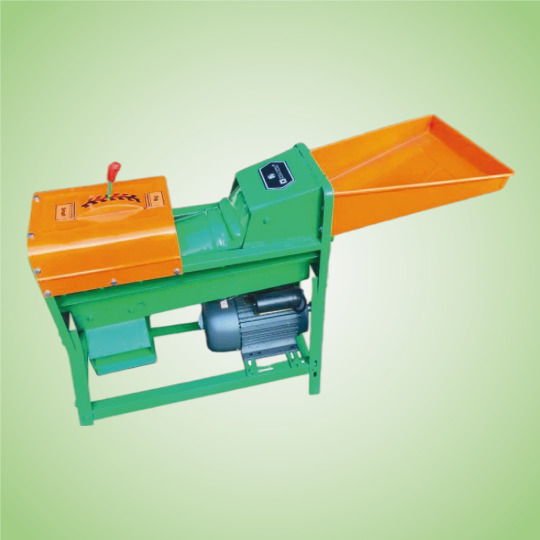
Precision Agriculture: Equipment like precision seeders and harvesters enables precise planting and harvesting, optimizing resource utilization.
Vinglob Greentech: Pioneering Agriculture Equipment Manufacturers in India

Vinglob Greentech is a name synonymous with innovation, quality, and reliability in the field of agriculture equipment manufacturing. Here's why they are the preferred choice for farmers and gardeners across India:
Wide Range of Equipment: Vinglob Greentech offers an extensive range of agriculture equipment, catering to diverse farming and gardening needs. Whether you're cultivating crops, tending to a garden, or managing a sprawling farm, they have the right tools for you.
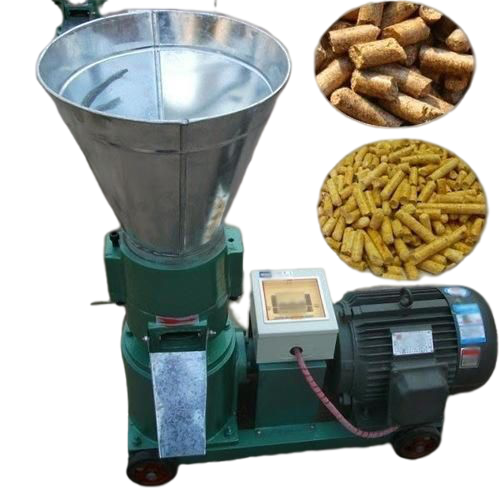
Innovative Solutions: The company is committed to staying at the forefront of agricultural technology. They continuously innovate and adapt their equipment to meet the evolving needs of Indian farmers.
Quality Assurance: Vinglob Greentechplaces a premium on quality. Their equipment undergoes rigorous testing and quality checks to ensure durability and performance in the field.
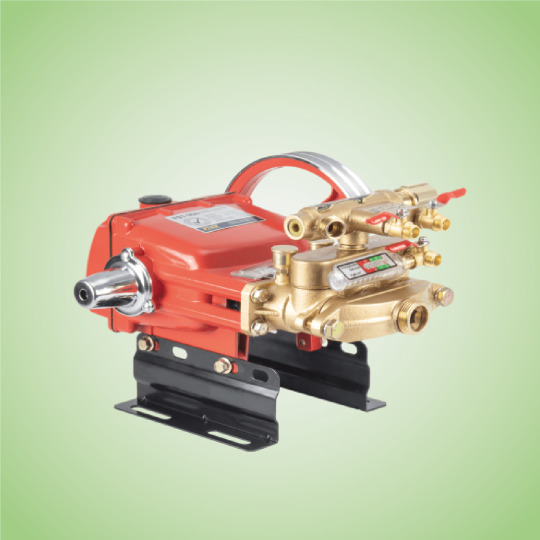
Affordability: The company believes that modern agriculture equipment should be accessible to all. They offer competitive pricing without compromising on quality.
Dedicated Customer Support: Vinglob Greentech is not just about selling equipment; they are committed to providing comprehensive support to their customers. From product selection to after-sales service, they are there every step of the way.
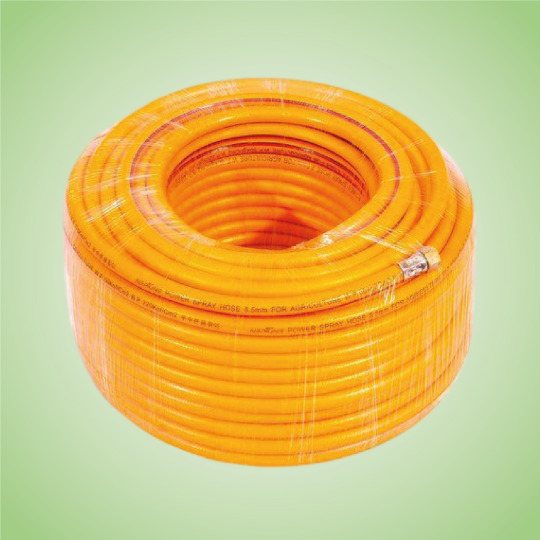
Agriculture Equipment Offerings
Vinglob Greentech's product portfolio spans a wide spectrum of agriculture and gardening equipment. Here are some of their key offerings:
Tractors and Tillers: Vinglob Greentech manufactures a range of tractors and tillers, from compact models suitable for small farms to powerful tractors for large-scale agriculture.
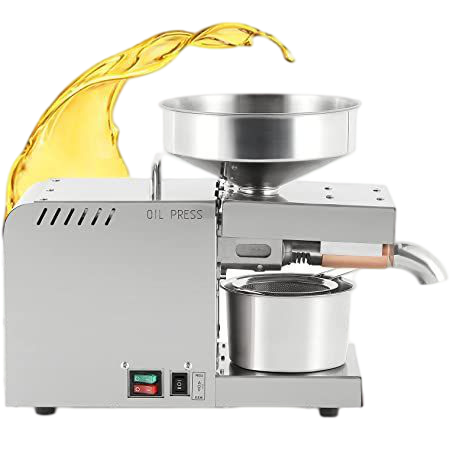
Seeders and Planters: Their precision seeders and planters ensure accurate and efficient planting, reducing seed wastage and optimizing crop yield.
Harvesters: The company offers a variety of harvesters for different crops, making the harvesting process faster and more efficient.
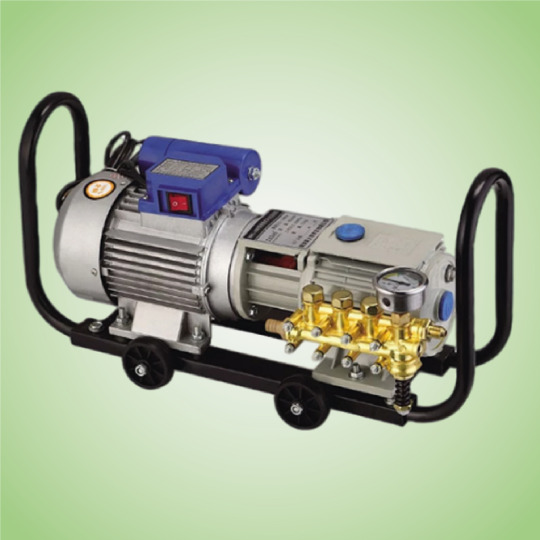
Irrigation Equipment:Vinglob Greentech provides a range of irrigation solutions, including drip irrigation systems, sprinklers, and pumps, to ensure optimal water management.
Garden Tools: For gardening enthusiasts, they offer a selection of garden tools and equipment, including lawnmowers, hedge trimmers, and more.
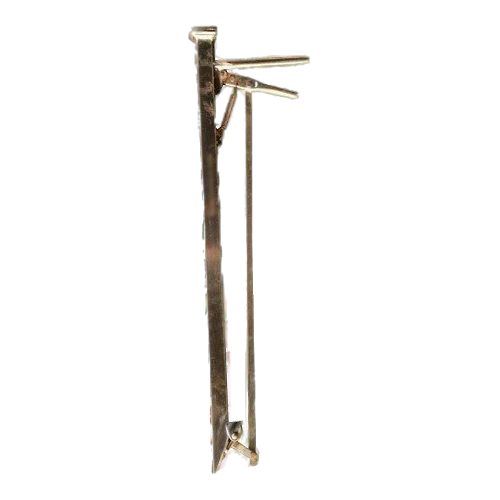
Cultivators and Ploughs: Their cultivators and ploughs are designed to prepare the soil for planting, ensuring a healthy and productive crop.
Embrace Modern Agriculture with Vinglob Greentech
As India's agriculture sector continues to evolve, embracing modern farming and gardening practices becomes increasingly important. Vinglob Greentech empowers farmers and gardeners with high-quality, innovative agriculture equipment that enhances productivity, sustainability, and profitability.
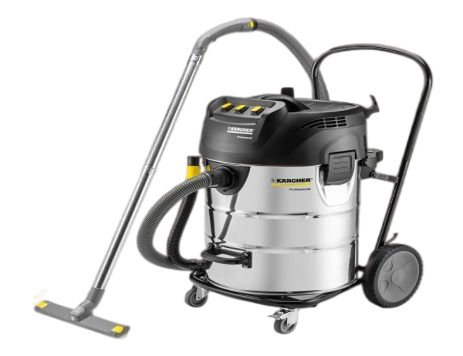
Whether you're a traditional farmer looking to modernize your operations or a gardening enthusiast seeking efficient tools, Vinglob Greentech has you covered. Contact them today to explore their wide range of agriculture and gardening equipment and embark on a journey towards more productive and sustainable farming and gardening practices. Elevate your agricultural endeavors with Vinglob Greentech, your trusted partner in agriculture equipment manufacturing in India.
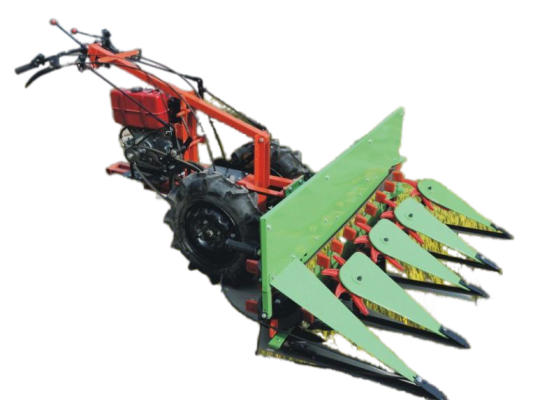
For More Information
https://www.vgtindia.in/products.php
A/2, Bharat Small Industrial Estate, Pin Code :- 382445
B/H. Gujarat Offset, Vatva, Ahmedabad,
7984030141 | 9909793721
#Agriculture Equipments Manufacturers India#Agriculture Equipments Manufacturers#Agriculture Equipments in India#Agriculture Equipments#power weeder#power weeder manufacturers#business#health & fitness#animal feed pellet machine manufacturers in india#animal feed pellet machine
0 notes
Text
Deekay Overseas is a leading manufacturer and exporter of animal feed pellet machine. We offer a wide range of pellet machines in various sizes and models to suit the needs of different types of animals. Our machines are designed to produce high-quality feed pellets with minimum labor and cost. The machines are also equipped with advanced safety features to ensure the safety of operators. Deekay Overseas also offers after-sales service and maintenance of their machines.
1 note
·
View note
Text
Revolutionizing Green Energy with Biomass Pellet Making Machines
In the quest for sustainable energy solutions, biomass pellet making machines have emerged as a game-changer. These advanced machines are designed to convert waste materials, such as agricultural residues, wood chips, and other organic waste, into high-quality biomass pellets. This not only helps in waste management but also contributes to reducing the reliance on fossil fuels, making it a green and eco-friendly alternative.
What is a Biomass Pellet Making Machine?
A biomass pellet making machine is an industrial-grade equipment that compresses organic materials into small, dense pellets, which can be used as a source of renewable energy. These pellets are an efficient and environmentally friendly way of generating heat and power, making them an essential component in the clean energy industry.
The Functionality of a Biomass Pellet Machine
The biomass pellet machine works by feeding raw materials such as wood chips, sawdust, agricultural by-products, or other plant-based materials into a high-pressure system. The machine then compresses the material through a die, resulting in uniform-sized pellets that can be burned for energy production. This process helps in reducing the overall volume of the material, which makes it easier and more cost-effective to transport and store.
Why Choose a Biomass Pellet Mill?
A biomass pellet mill is equipped with cutting-edge technology that ensures high pellet density, uniform size, and superior durability. By using a biomass pellet machine, manufacturers and businesses can produce fuel that burns cleaner, produces less ash, and emits fewer pollutants when compared to conventional fuels. Furthermore, the energy from biomass pellets is renewable and sustainable, providing a long-term solution for reducing carbon emissions.
Benefits of Biomass Pellet Machines:
Environmentally Friendly: Biomass pellets are made from renewable organic waste, reducing dependency on non-renewable fossil fuels.
Cost-Effective: The cost of producing biomass pellets is relatively low, making them an affordable energy solution.
Energy Efficiency: Biomass pellets have high energy content, ensuring efficient fuel use and higher energy output.
Waste Reduction: By converting waste materials into useful products, biomass pellet machines help in reducing landfill waste.
Versatility: The machine can be used in various industries, including power plants, residential heating, and even animal bedding.
Applications of Biomass Pellets
Residential Heating: Biomass pellets are used in stoves and boilers to heat homes, offering a green alternative to traditional heating methods.
Power Plants: Large-scale power plants use biomass pellets to generate electricity, helping in reducing greenhouse gas emissions.
Industrial Use: Biomass pellets are also used in various industries as an eco-friendly source of heat for manufacturing processes.
Conclusion
Investing in a biomass pellet machine is a step towards a sustainable future. With growing demand for renewable energy, using a biomass pellet mill can help you take advantage of this eco-friendly fuel source. Whether you are looking to reduce waste, cut energy costs, or contribute to green energy, a biomass pellet making machine is an excellent choice. Contact us today to learn more about how these machines can benefit your business and the environment.
0 notes
Text
Grass Pelleting Machines Manufacturer in Punjab
Grass pelleting is now an essential procedure for a variety of sectors, including renewable energy and agriculture. Grass pellets are a useful alternative for animal feed and a sustainable fuel source. When looking for top-notch grass pelleting equipment in Punjab, BK Engineers is a reliable brand. This post will discuss the advantages of grass pelleting, the machinery’s technology, and the reasons BK Engineers is Punjab’s top manufacturer.
BK Engineers, a reputable manufacturer of grass pelleting machines in Punjab, is available to assist you in realising the full potential of this cutting-edge technology. Our dedication to promoting your success is demonstrated by our proficiency, superior goods, and customer-focused methodology. Contact us now to learn more about our machines.

0 notes
Text
Pelletizing Machines: An Essential Tool for Modern Manufacturing
In the present-day fast-paced industrial industry, efficiency and cost-effectiveness are critical. Enter the pelletizing machine, a versatile workhorse that has become indispensable across a wide range of industries. From plastics and chemicals to pharmaceuticals and food processing, pelletizing machines play a crucial role in transforming raw materials into uniform, easy-to-handle pellets.
What is a Pelletizing Machine?
A pelletizing machine, also known as a pelletizer, is a piece of equipment that converts powdered or granular materials into small, free-flowing pellets. This is achieved by compressing the material through a die, resulting in consistent shapes and sizes. The process offers numerous benefits, making it a preferred choice for many manufacturers.
Why are Pelletizing Machines Essential?
Here's a breakdown of why pelletizing machines are so vital in modern manufacturing:
Improved Material Handling: Pellets are easier to store, transport, and feed into other machinery compared to loose powders or granules. This reduces waste, dust, and potential hazards.
Enhanced Product Quality: Pelletization ensures uniform size and density, leading to consistent product quality and improved performance. Imagine the difference consistent plastic pellets make in injection molding compared to using inconsistent plastic flakes.
Increased Production Efficiency: Pelletizing streamlines production processes, allowing for higher throughput and reduced downtime. This is especially significant in industries with high volume production.
Reduced Waste and Environmental Impact: By minimizing dust and spillage, pelletizing machines contribute to a cleaner and safer working environment. They also enable the efficient use of recycled materials, promoting sustainability.
Versatility: Pelletizing machines can handle a wide range of materials, including plastics, chemicals, pharmaceuticals, food ingredients, and even biomass. This adaptability makes them valuable across diverse sectors.
Applications of Pelletizing Machines:
Plastics Industry: Producing plastic pellets for injection molding, extrusion, and blow molding. This includes recycling plastic waste into reusable pellets.
Chemical Industry: Producing pellets of fertilizers, pesticides, and other chemicals for easier handling and application.
Pharmaceutical Industry: Forming pellets of drugs for controlled release and improved dosage accuracy.
Food Processing: Creating food pellets for animal feed, snacks, and convenience foods.
Biomass Energy: Converting biomass materials like wood waste and agricultural
residues into fuel pellets.
Types of Pelletizing Machines:
There are various types of pelletizing machines, each designed for specific applications and materials:
Ring Die Pelletizers: Commonly used for high-volume production of plastic pellets.
Flat Die Pelletizers: Suitable for pelletizing a wider range of materials, including those with low melting points.
Extrusion Pelletizers: Used for creating pellets from molten materials like plastics and rubber.
Looking Ahead:
As technology advances, we can expect further innovations in pelletizing machine design, including increased automation, improved energy efficiency, and enhanced process control. This will further solidify the role of pelletizing machines as a cornerstone of modern manufacturing.
While this blog focuses on pelletizing machines, it's worth noting that other technologies like plethysmometers and R&D coaters also play important roles in specific industries.
A plethysmometer is a device used to measure volume changes in a living organism or organ, often used in pharmacological research.
An R&D coater is a specialized piece of equipment used in research and development to test and develop new coating formulations and processes.
These technologies, while distinct from pelletizing machines, highlight the diverse range of tools and equipment that drive innovation and efficiency in modern manufacturing and research.
0 notes
Text
Complete Guide to pellet machine manufacturers in India

The demand for efficient and cost-effective livestock feed solutions has been growing significantly in India. Among the many innovations in the field of animal husbandry, pellet machines have become a game-changer. These machines are essential for transforming raw feed materials into compact, easy-to-digest pellets for livestock. This article explores the key aspects of pellet machine manufacturers in India, the benefits of using pellet machines, and the cost factors involved in setting up these machines.
Understanding Pellet Machines and Their Importance
Pellet machines are specialized equipment designed to compress powdered raw materials into uniform pellets. These pellets are widely used in the agriculture and animal husbandry industries to feed cattle, poultry, and other livestock. A pellet machine not only ensures uniformity in feed but also improves the nutritional quality, making it easier for animals to digest.
Given the rising demand for high-quality feed, India has seen a significant increase in the number of pellet machine manufacturers in India. These manufacturers cater to diverse needs, ranging from small-scale farms to large-scale commercial setups.
Leading Cattle Feed Plant Manufacturers in India
Cattle feed plants play a vital role in processing raw ingredients into nutritious feed. Many cattle feed plant manufacturers in India also integrate pellet machines into their plants, ensuring a streamlined production process. These plants typically include systems for grinding, mixing, and pelletizing feed ingredients, offering an all-in-one solution for farmers and feed producers.
Top manufacturers in this sector are known for their robust machinery and advanced technology. They often provide customized solutions, catering to the specific needs of Indian farmers. When choosing a cattle feed plant or pellet machine, factors like durability, efficiency, and after-sales service play a crucial role.
Features of High-Quality Pellet Machines
Durability and Efficiency: A good pellet machine should be made of high-quality materials, ensuring long-term performance and reduced maintenance costs.
Energy Efficiency: Modern pellet machines are designed to consume less power, making them ideal for small-scale and large-scale operations.
Customizable Output: These machines allow adjustments in pellet size and density, catering to the dietary needs of different livestock.
The best pellet machine manufacturers in India prioritize these features, ensuring their machines deliver optimal performance in various operational environments.
Cost of Pellet Machines in India
One of the most important factors for farmers and feed producers is the pellet machine cost in India. The price varies widely depending on the machine's capacity, features, and manufacturer. Small-scale pellet machines can cost anywhere between ₹50,000 and ₹2,00,000, while industrial-grade machines can go up to ₹10,00,000 or more.
Key factors influencing the pellet machine cost in India include:
Capacity: Machines with higher output capacities tend to be more expensive.
Technology: Advanced features like automation and energy efficiency increase the cost.
Brand Reputation: Established brands with proven track records often command higher prices.
Farmers should assess their specific requirements before investing, as the machine's efficiency and features can significantly impact long-term operational costs.
Why Choose Indian Manufacturers?
India has emerged as a hub for high-quality, affordable pellet machines. Here’s why opting for pellet machine manufacturers in India is a smart choice:
Cost-Effectiveness: Indian manufacturers offer competitive pricing compared to international brands.
Customization: Many manufacturers provide tailored solutions to meet the unique requirements of Indian livestock farmers.
Local Support: Indian manufacturers ensure better after-sales support, including maintenance and spare parts availability.
Benefits of Using Pellet Machines for Cattle Feed
For farmers and feed producers, investing in pellet machines has several advantages:
Improved Nutrition: Pellets ensure uniform mixing of ingredients, enhancing the nutritional value of the feed.
Reduced Waste: The compact form of pellets minimizes spillage and waste during feeding.
Ease of Storage and Transportation: Pellets occupy less space and are easier to transport compared to loose feed materials.
These benefits make it imperative to choose high-quality equipment from reliable pellet machine manufacturers in India or cattle feed plant manufacturers in India.
Conclusion
Pellet machines have revolutionized the livestock feed industry in India by offering an efficient way to produce high-quality, nutrient-rich feed. With a range of options available from top pellet machine manufacturers in India, farmers and feed producers can easily find machinery tailored to their needs. When considering an investment, factors like the pellet machine cost in India, capacity, and after-sales support should be thoroughly evaluated. For farmers looking to scale up their operations or improve feed efficiency, collaborating with trusted cattle feed plant manufacturers in India and pellet machine suppliers is a step in the right direction. By doing so, they can ensure optimal feed quality, reduce operational costs, and boost overall productivity.
#cattle feed plant manufacturing company#pellet machine manufacturer in india#pellet machine cost in india
0 notes
Text
Goat Feed Pellet Machine Manufacturer — Finix Agro Tech

Goat feed pellet machine Manufacturer — Finix Agro Tech have emerged as a game-changer, offering a convenient and cost-effective solution. Pelletized feed helps streamline the feeding process while ensuring goats receive balanced nutrition.
Finix Agro Tech is a trusted name in the production of high-quality goat feed pellet machines. Known for their reliability, efficiency, and user-friendly designs, their machines are engineered to produce superior-quality pellets that support optimal animal health and growth.
Click here to know more about Goat Feed Pellet Machine Manufacturer.
Finix agro Tech
Contact; 93613 66651
Website: https://finixagrotech.com/
0 notes
Text
The Pumpkin Patch
[Slipped between the pages is a paper flier, discolored with time and fraying at the edges. Stylized illustrations of grinning pumpkins, birds holding ribbon, and costumed children decorate the piece. Small splotches of an unknown dark substance cover parts of the aged paper. It reads:
"Join us #or our annual pumpkin patch! Octob#r 1st-29th, 10am-6pm We h#ve:
Corn Maze
Hay Rides (comes with one free pumpkin of your #elec#ion)
The Bird
Cider Pressing
Apple Bobbing
Corn Pit
Farm Animals
…and much more! Located at ###### ## ##### ####, ########## ## #####"]
Autumn is my favorite time of year, you see. The air is crisp and cold enough to sting your nose, the trees light themselves ablaze with color before becoming barren. It's the year's final breath before it gets too cold to go outside, and a nice excuse to indulge. As per my long-standing tradition, I went to the local pumpkin patch a few weeks ago. I wanted to take my girlfriend, but she was unable to accompany me on account of falling ill. There was the usual fare, of course: overly-ambitious teenagers getting lost in the corn maze, people milling about holding hot cider, and half-drunk farmers driving families out to the pumpkin fields.
My first point of business was to check out the animals brought in from some of the nearby farms. It's always a treat to see this year's pigs and goats, and I enjoy feeding them. There was a child there, must have been about three years old, who seemed terrified of the goats. Their eyes were at roughly the same level, and the little girl was holding a tiny handful of feed pellets. She kept turning away from the goat and running back to wrap herself around her mother's legs. The goat kept its rectangular eyes fixated on the blubbering child, sniffing around and bleating in expectation.
I wanted to get a pumpkin for me and Shirley to carve, so I went out to the tractors to see about getting a hay ride there. When I got there, I saw a tractor loaded with trailers and hay bale seats. A few crows sat themselves down on the hay bales. The tractor itself was a beast of a machine, and I could still hear the cracks of the hot engine metal settling in the cold air. Although there was a tractor, I was quick to find that there was nobody around to operate the thing. I spent a good while snooping around to find a driver, but gave up after fifteen minutes. So I decided to walk the mile out to the field myself - it's no longer than my walk to work, after all.
The trail out to the pumpkin field was rough and uneven, deep treads dug into the mangled earth. I saw a few more crows standing around together, doing nothing in particular. Every once in a while I would trip over some bit of exposed root that caught my shoe, despite the lack of trees in this part of the farm. The sky hung heavy with clouds, casting the yellow field of straw in a grey malaise. The wind moaned slightly, and the air grew noticeably colder. All at once, a collection of caws echoed through the air and a storm of black feathers kicked up from the field. A murder took to the sky with a cacophony. I saw, then, a few other walkers as I closed in on the pumpkin field. A group of three men, close together, each carrying a heavy pumpkin in his arms. One of the men had a noticeable limp, but all three of them still stayed close together. I waved to them to get their attention, but they made no acknowledgement. Whether the man with the limp had summoned a great deal of speed in compensation for his condition or his compatriots were accommodating him was, I admit, something I gave slightly too much speculation. The pumpkins on the ground were of all sorts, ages, and conditions, and all were caked in dried up mud. Many of the elder gourds were caved in and mushy, while smaller specimens dotted the landscape.
More and more, the walkers grew in number. All of them held pumpkins, some of them limped, none of them spoke. All of them in the wordless crowd shuffled along the tangled mess of the pumpkin patch. When one of them tripped on a pumpkin root, nobody stopped to help them. The roots coiled around their arms and legs, pulling them down, down into the dirt.
Large wooden crosses began to appear as I followed these people to their unseen destination. The crosses were covered in thick pumpkin roots and vines that tied together the wood. These crosses held aloft lumpy scarecrows, stuffed with straw that poked out of the makeshift stitches. Upon closer inspection, it became clear to me that these scarecrows were not made of burlap, but skin and bone. These effigies, radiating from a central point in the distance, were human. Or, humans, rather. Where parts were stitched together, straw poked out of the botched sutures. One of the scarecrows had two left hands. I became sick to myself. But even still, my curiosity remained. I needed to see to where these people all walked. And then I saw it.
A colossal white crane sat in an intricately folded position, about the size of the tractor I saw earlier in the day. It had a few small crow-attendants by its side, making occasional squawks and pruning their lord's feathers. Around the bird were six scarecrows arranged in a circle, each with a heavy iron chain around their bloated neck that bolted to an iron collar fitted around that of the crane. The massive bird had atop its head a crimson crown that constantly dripped something thick. A walker approached the bird, holding his pumpkin. The supplicant held his pumpkin high above his head, and the bird tilted and jerked its head forward with great swiftness such that its golden eye was inches from the pumpkin. It looked the pumpkin over, moved its head back, then shot its beak forward with the great strength of its folded neck muscles and devoured the supplicant whole. The pumpkin fell to the ground and broke apart into stringy chunks.
Suffice to say, I did not get a pumpkin for Shirley that day. I hope she's feeling better; I haven't heard from her in a while.
0 notes
Text
Does animal feed pellet machine require additional drying or conditioning?
Animal feed pellet machines often require additional drying or conditioning to achieve optimal pellet quality, depending on the moisture content of the raw materials and the desired characteristics of the final product. Proper drying and conditioning are crucial steps in the pelleting process, as they significantly affect pellet durability, nutritional value, and overall performance.
Drying is essential when the moisture content of the raw materials exceeds the recommended levels, typically around 12-15% for most feed ingredients. Excess moisture can lead to issues during pelleting, such as poor pellet hammer mill machine company formation, increased risk of spoilage, and reduced shelf life. High moisture content can also affect the machine's efficiency and lead to operational problems like clogging.
To address this, feed producers may utilize drying equipment—such as rotary dryers or flash dryers—to reduce moisture levels before the pelleting process. Properly dried ingredients not only improve pellet formation but also enhance the overall quality of the feed, ensuring that it is more palatable and digestible for animals.
Conditioning is another critical step that occurs just before the material enters the pellet mill. This process involves adding steam, moisture, or heat to the feed mixture, which helps soften the ingredients, making them more pliable for compression. Conditioning serves multiple purposes:
Improved Binding: By increasing the temperature and moisture content, conditioning helps to gelatinize starches, which improves binding during pelleting. This results in firmer and more durable pellets.
Nutritional Enhancement: The conditioning process can also help activate enzymes and improve the digestibility of certain feed ingredients, leading to better nutrient absorption by the animals.
Reduction of Pathogens: The heat generated during conditioning can reduce the microbial load in the feed, contributing to better animal health and reducing the risk of diseases.
In summary, while not every feed formulation will require extensive drying or conditioning, these processes are often vital for producing high-quality pellets. The specific requirements will depend on the type of ingredients used, their initial moisture content, and the nutritional goals for the feed. For optimal performance and quality, feed producers should carefully assess their raw materials and incorporate appropriate drying and conditioning techniques into their pelleting operations. This ensures that the final product is not only nutritious and palatable but also has a longer shelf life and better performance for the animals consuming it.
0 notes
Text
0 notes
Text
As an important part of animal husbandry, pig industry faces the problems of high feed cost and low feed conversion rate in modern large-scale breeding. In order to improve the economic benefits of pig farms, the new feed granulation technology came into being and became the new pet of pig farms. Through the use of feed granulator, this technology not only improves the utilization of feed, but also effectively reduces the cost of farming.
1. Efficient transformation of Fertilizer Granulating Production Line
The Fertilizer Granulating Production Line uses a series of processes to produce granular feed from various raw materials. Such production lines usually include crushing, mixing, granulation, drying and packaging. In the pig farm, the pellet feed processed by this production line has the advantages of balanced nutrition, easy digestion, reducing waste and so on, thus improving the utilization rate of feed.
2. the recycling of Organic Fertilizer Production Line
In pig farms, manure and waste water are common wastes. Through the Organic Fertilizer Production Line, this waste can be converted into organic fertilizer. This organic fertilizer can not only be used in pig farms to increase crop yields, but also can be sold as a commodity, bringing additional economic benefits to pig farms.

3. Precise granulation of Flat-Die Pellet Machine
The Flat-Die Pellet Machine is the key equipment in the feed pelletizing production line, which can precisely control the grain size and shape of the feed according to the growth stage of different pigs. This precise granulation technology helps to improve the pig’s acceptance of feed, reduce feed waste, and thus improve feed utilization.

4. Strict Screening by Rotary Screening Machine
During the feed pelletizing process, the Rotary Screening Machine is used to screen out unqualified feed particles to ensure uniform size and regular shape of the final product. This not only helps to improve the palatability of the feed, but also reduces feed waste caused by too large or too small particles.

Conclusion
Through the application of feed granulator, pig farms can achieve efficient conversion and accurate supply of feed, and significantly improve the utilization rate of feed. At the same time, through the recycling of organic fertilizer production lines, pig farms can convert waste into valuable organic fertilizers and achieve sustainable use of resources. This innovative feed processing technology not only helps reduce the operating costs of pig farms, but also improves the overall competitiveness of the pig industry.
#Fertilizer Granulating Production Line#Organic Fertilizer Production Line#Flat-Die Pellet Machine#Rotary Screening Machine
0 notes
Text
In the vast pastures of Australia, a new trend is emerging, that is, the use of environmentally friendly fertilizer granulators to improve the quality and yield of forage. The application of this technology not only helps to protect the environment, but also promotes the sustainable development of animal husbandry.
The Organic Fertilizer Production Line has played an important role in this process. Through this production line, organic waste in the pasture, such as animal waste and crop residues, can be converted into high-quality organic fertilizer. These fertilizers are rich in key nutrients such as nitrogen, phosphorus and potassium, which are essential for grass growth.

The Fertilizer Granules Compaction Machine in the fertilizer granulator series is the key equipment to achieve this transformation. It extrudes organic fertilizers into pellets by physical methods, which is not only easy to store and transport, but also improves the application efficiency and uniformity of fertilizers.

The Horizontal Ribbon Mixer also plays a crucial role in the production of organic fertilizers. It ensures a uniform mix of various raw materials, resulting in the production of organic fertilizers of consistent quality. The design of this mixer helps to evenly mix the raw materials, avoiding the problem of local too wet or too dry, thus ensuring the stability and consistency of the organic fertilizer.

The Rotary Screening Machine is responsible for grading the resulting fertilizer particles to ensure that the fertilizer particles are uniform in size and suitable for grass absorption. The use of screening machine improves the application quality of fertilizer and avoids the problem that the fertilizer effect is affected by too large or too small particles.
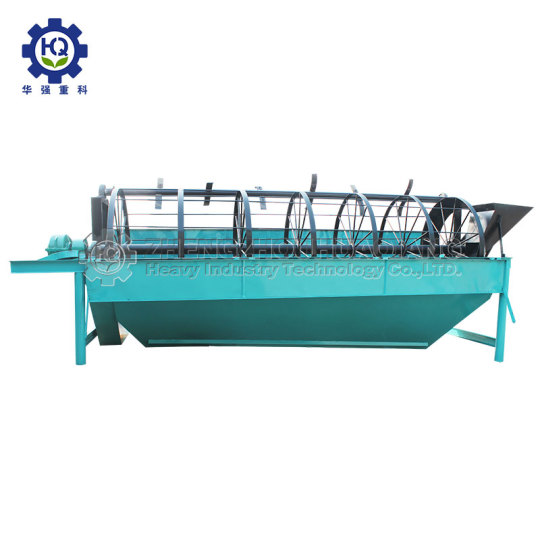
Finally, Uniform Feeder as the front end of the production line, can evenly feed raw materials into the pelletizer, to ensure the continuity and uniformity of the production process. This not only improves production efficiency, but also helps maintain the quality of the final product.

Through the application of these advanced organic fertilizer granulation technologies and equipment, Australian pastures can promote pasture growth in a more environmentally friendly and efficient way. This will not only help to improve the economic efficiency of livestock farming, but also reduce the impact on the environment and achieve a true green revolution.
#Organic Fertilizer Production Line#Fertilizer Granules Compaction Machine#Horizontal Ribbon Mixer#Rotary Screening Machine#Uniform Feeder
0 notes
Text
In India, the cultivation of spice crops has a long history, and its increase has been an important goal of local agricultural development. With the progress of science and technology, the application of organic fertilizer granulator technology has opened up a new way for the increase of spice crops in India.
Organic Fertilizer Production Line Organic fertilizer production line converts organic matter such as agricultural waste and animal waste into high-value organic fertilizers. This production line not only improves the recycling rate of resources, but also provides rich nutrition for spice crops, enhances the water retention and air permeability of the soil, and thus promotes the growth and increase of crops.

Fertilizer Granules Compaction Machine In spice growing in India, the application of Fertilizer Granules Compaction Machine has effectively improved the utilization of fertilizer. This granulator squeezes fertilizer raw materials into pellets through physical action, making fertilizer particles more uniform, stable, and easy to apply and store. The application of granular fertilizer helps to improve the speed and efficiency of nutrient release in the fertilizer, thereby increasing the yield of spice crops.

Horizontal Ribbon Mixer An even mixture of fertilizers is essential to ensure a nutritionally balanced soil for spice crops. Horizontal Ribbon Mixer, with its unique mixing method, ensures the full mixing of various fertilizer ingredients. The application of this mixer makes the products on the fertilizer production line more uniform, improves the effect of fertilizer use, and ensures the healthy growth of spice crops.

Uniform Feeder In the Organic Fertilizer Production Line, the role of a Uniform Feeder is to ensure that the raw material enters the granulator at a constant speed and consistent granularity. This uniform feeding method helps to improve the working efficiency and granulation quality of the pelletizer, thus ensuring the stability and yield increase effect of the organic fertilizer.

Through the application of these advanced organic fertilizer granulators and production lines, the agricultural production of spice crops in India has not only improved efficiency, but also achieved environmental protection and sustainable use of resources. The application of these technologies provides valuable experience for the sustainable development of global agriculture.
#Organic Fertilizer Production Line#Fertilizer Granules Compaction Machine#Horizontal Ribbon Mixer#Uniform Feeder
0 notes
Text
0 notes